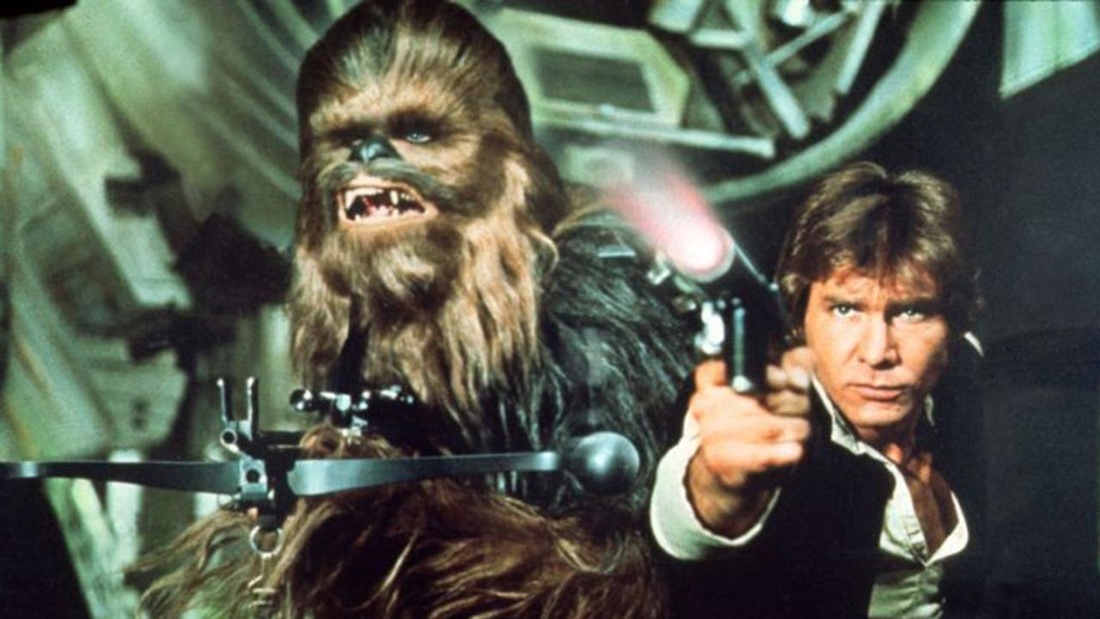Star Wars Episode IV: A New Hope [1977] is the centerpiece of modern popular culture. Like tectonic plates, Star Wars rearranged the foundations of the Western canon until everything from the past four decades owed it a debt of creative license. Of course, the film itself owes a debt to the past four hundred decades, but don’t tell that to Greedo. A long time ago, so the tales say, a young, eager farm boy named Luke Skywalker lived on the planet which was farthest from the bright center of the universe. But one day, he stumbled upon a secret message: a plea for help from a captive princess; directed towards an old hermit who was once a great warrior. Mark Hamill leaves his indelible mark on the cinematic medium as Luke, with Carrie Fisher and Harrison Ford joining him as the fearless princess Leia Organa and the suave pirate Han Solo. (Respectively, if you didn’t know.)
Dollars will do fine. Writer-director George Lucas didn’t hammer this thing out during his lunch break (well maybe, but it was a LOT of successive lunch breaks)—it is quite miraculous that of all the arbitrary directions the final product could have gone from his hesitant vision, it went the way that would stick for all time. He needed to convince veteran thespian Alec Guiness, as the learned forward-thinking wizard Obi-Wan Kenobi, to trust the counterintuitive material and take seriously Peter Mayhew, in his towering dog costume, and Anthony Daniels, dressed like a brass sink, as the intelligent pilot Chewbacca and the living whirring (whining) robot C-3PO. He also needed to listen to reason when people told him that having all the main characters be midgets was a flawed premise.
I’ll try swiping, that’s a good trick! Why is it so enduring? Because everything in it is iconic. Every prop can be highlighted and displayed to delightful effect. Every costume can be replicated by cosplayers and recognized from across the panel room. Every special effect can be scrutinized and retain its verisimilitude. The artistry’s density is absolute. There are no gaps between the pieces that work. There are no transitions cut a frame too early or late, nor is there a solitary line of unquotable dialogue: even the arbitrary scene-setting stuff can be applied with minimal context. Art director John Barry designed sets that literally contained a new subculture; sound designer Ben Burtt assembled a sonic identity that could be found nowhere else beforehand; composer John Williams wrote in an aural language that, although as precise in meaning as any linguistic statement, is universally understood in that shared human mindset from which stories were born.
Flesh them out. All of them. Despite its renowned status as an epic, Star Wars is actually quite a small and intimate story. Its settings are enormous, and its themes are evocative, but never does the perspective zoom out too far from the human(ish) characters that are the muscles and joints of the whole. The drama is sown from the decisions of its players: the heroism of Luke, the ambition of Leia, and the greed of Han. The plot could be translated to a high school comedy or a war film with reasonable fidelity: undoubtedly, it already has been.

